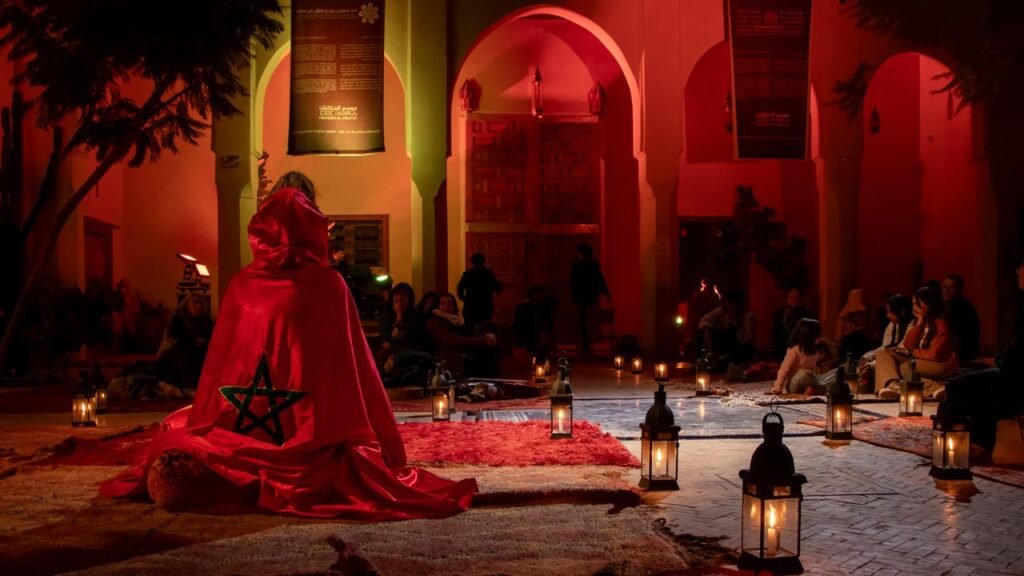“Storytellers started to perform in the square to provide entertainment for the merchants,”
Khaznaoui tells me. “The tradesmen would then share their tales about traveling in the region. Storytellers would rework these travel accounts for future performances. That is how the hikayat ritual was born in Morocco.”
Marrakech’s week-long festival revives the tradition of sharing tales. Storytellers from across the world have been invited to participate in performances at Jemaa el-Fna square and Marrakech’s World Story Telling Café. A couple of days later, I find myself at the minimalist café. Hichem Derouich stands out against its beige walls with his red felt cap and patterned waistcoat, both of which become a colorful blur as he darts from place to place sharing his stories.
Derouich hails from Sousse, Tunisia. “There is a long history of hikayat in Tunisia, though we call it
fdaouia,” Derouich says, explaining that the bards would traditionally perform in the
medinas and cafés of the country.
The introduction of coffeehouses facilitated the rise of storytelling throughout the region. “In
Lebanon, we see hikayat traditions emerge in squares and public spaces in the mountains and
rural areas first,” Roseanne Saad Khalaf, associate professor of English and Creative Writing at
the American University of Beirut, tells me. “The Ottoman Empire then built cafés in Beirut,
which brought storytelling to urban communities. We see the same happening in Damascus, Cairo,
Aleppo, and other regional strongholds.”
Stories often focused on imparting traditions, values, and lessons to the listener. “They had
captivating plots packed with adventure, intrigue, and action,” Khalaf explains. “The tales also served as a way to gather and spread information, with the tellers becoming news anchors of sorts. Modern technology and other forms of entertainment started to diminish their role in society during the 20th century, however.”


